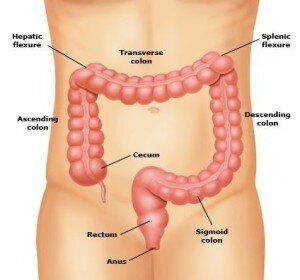
The pain from an anal fissure can be intense enough to cause sufferers to reduce their activity level on a daily basis. In the most severe cases, it can cause discomfort for several hours after using the bathroom, and greatly reduce quality of life. Fortunately though, most anal fissures heal on their own in about a month. If the discomfort lasts longer than six weeks, medical intervention may be necessary to helping healing.
What Is An Anal Fissure?
Anal fissures may occur for no apparent reason. Or, they may occur when there is stress or pressure around the anus. This can create a small tear in the tissue, causing severe burning pain and bleeding during bowel movements. The blood associated with an anal fissure is bright red, and usually seen on the toilet paper used to clean up after using the bathroom. Dark red or brown blood may indicate a more serious condition.
Anal fissures may also cause itching and irritation in the area, and a small lump that looks like a skin tag near the anus. In some cases, the fissure is large enough to see a visible crack in the area around the anus.
How Will The Doctor Diagnose An Anal Fissure?
Anytime you experience pain while going to the bathroom or notice blood in your stool, you should see a doctor to rule out any serious causes of the pain and bleeding. While your general practitioner may take a look, there is a good chance you will be referred to a proctologist, who is a colon and rectal specialist.
Once at your appointment, the doctor will discuss your symptoms and medical history with you. Then there will be a visual exam of the anal region. In most cases, an experienced doctor will be able to see the tear, and offer a definitive diagnosis.
There are some rare cases when the fissure is not visible from the outside of the anal canal. In this situation, your doctor may used a short scope called an anoscope to look just inside the anal canal. A digital rectal exam, where the doctor inserts a gloved finger, is rarely used to diagnose a fissure, because of the increased pain when pressure is placed on the ring of muscles around the anus.
Do I Need Surgery?
Anal fissures can be incredibly uncomfortable, so it is no wonder sufferers look for ways to relieve the discomfort. For most, though, a little patience will allow the tear to heal on its own. This usually occurs in four to six weeks, with only adding fiber to the diet and taking laxatives as recommended by your doctor.
If the tear has not healed in six weeks, the diagnosis becomes a “chronic anal fissure” and more intensive medical intervention may be necessary. About ten percent of tears classified as chronic will eventually heal on their own, but the other 90 percent continue to cause symptoms. In addition, the following complications are possible:
- The fissure may tear further, down to the ring of muscle that holds the anus closed, the internal sphincter. This may heal through the use of prescription drugs, but often requires surgical repair.
- A non-healing anal fissure can trigger a cycle of discomfort that may require medications or surgery to reduce the pain and to repair or heal the fissure
- They may recur. It may be that the tear is healing, but recur in the same area because the skin in thin and weakened. Medication or surgery are often necessary to stop this process.
Are There Non-Surgical Treatment Options for An Anal Fissure?
Steroid creams may be applied externally to the area. This treatment speeds healing and relieves discomfort. In most cases, steroids are used four to six weeks after the development of the tear, or in conjunction with other treatment methods.
A first-line medical treatment for tears around the anus that have not healed within six weeks is nitroglycerin. This gel is applied to the anal opening to relax the muscles and increase the blood flow in the area. This allows the fissure to heal. Some people experience a headache while using this medication, but it is often the best choice for a chronic anal fissure. Diltiazim, commonly used to treat high blood pressure, may be applied as an ointment, to the anal area. It too relaxes the circular anal muscle, hopefully allowing the fissure to heal.
Relaxing the ring of muscles around the anus is also the goal of several other medications sometimes used to treat anal fissures. This includes Botulinum toxin type A, better known as Botox, that is injected into the muscle.
What About Surgery?
For most people, conservative treatment or medication will allow the tear to heal and the discomfort from the anal fissure will disappear. In cases where complications develop, symptoms are severe or the tears become a recurring issue, surgery may be necessary.
While there are several ways the surgery for an anal fissure can be performed, the primary goal of this procedure is to incise a part of the muscle ring that makes up the anal sphincter in order to allow the area to relax and heal.
The most commonly used procedure is known as a lateral internal sphincterotomy. This may be performed either in an open procedure, where the muscle fibers are brought into direct vision of the surgeon before cutting, or in a closed procedure, where the surgeon does directly view the muscle. The outcome is generally the same, and which technique is used is often based on the preference of the surgeon. While this surgery can be performed under local anaesthesia, general anaesthesia is more often used.
In those patients who have developed a skin tag, also known as a papilla, the tag may be removed at the same time as the sphincterotomy.
Treatment for anal fissures is often successful, and a colon and rectal specialist will be able to guide you through the treatment.
Next, read about Lateral Internal Sphincterotomy: The Recovery.









